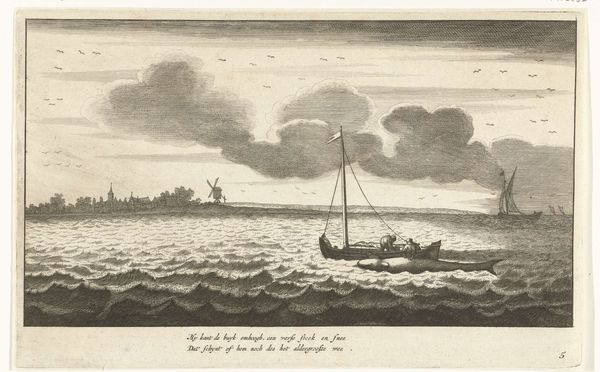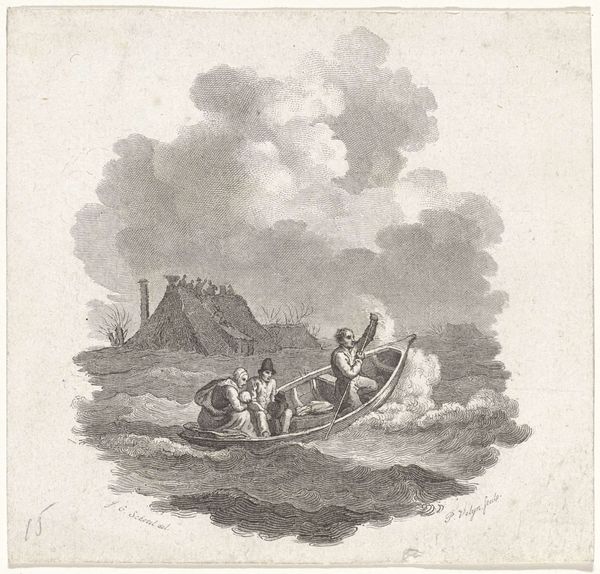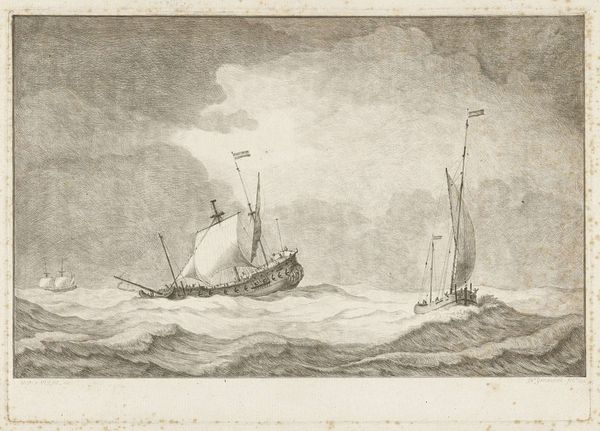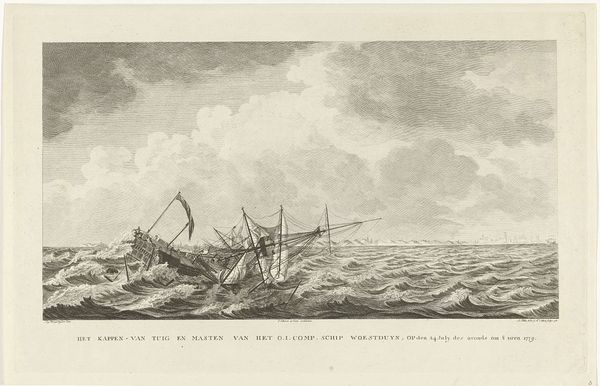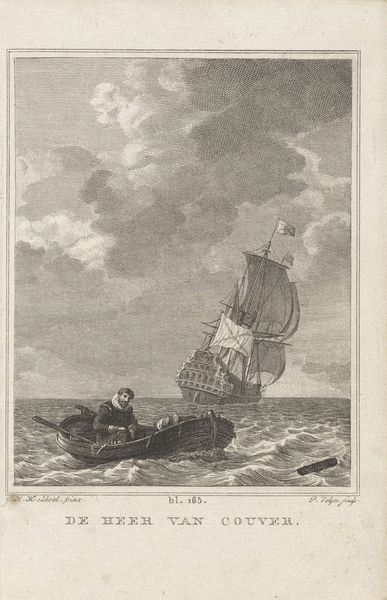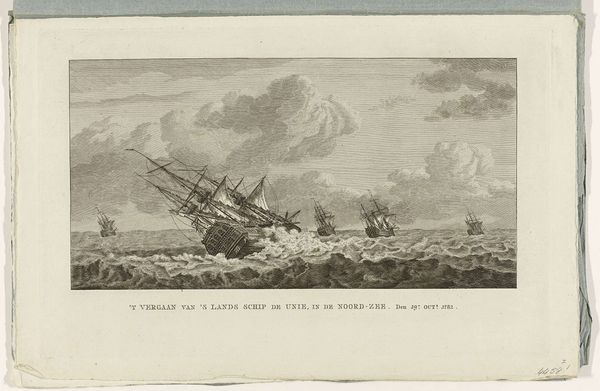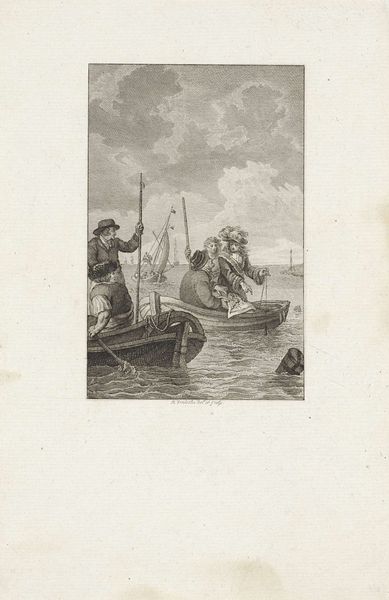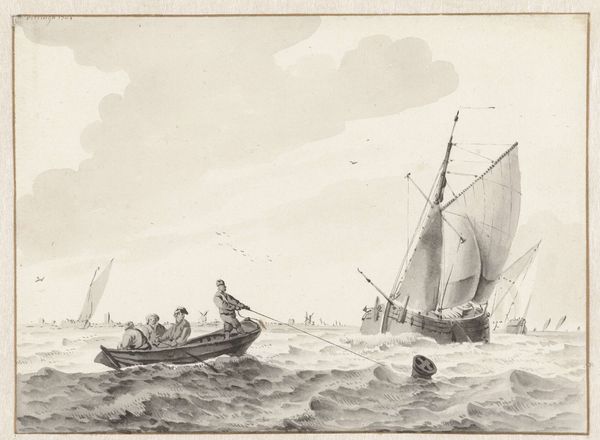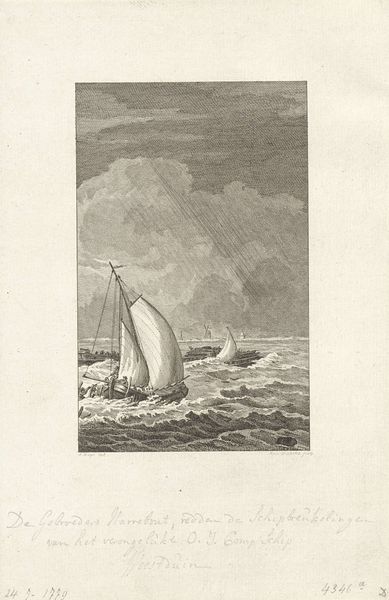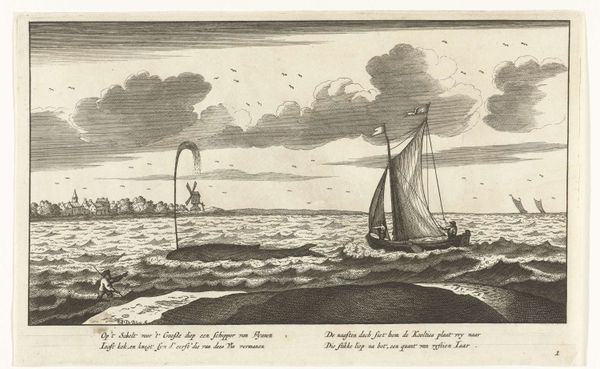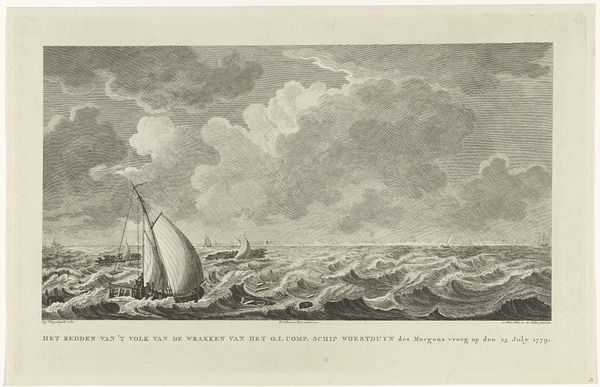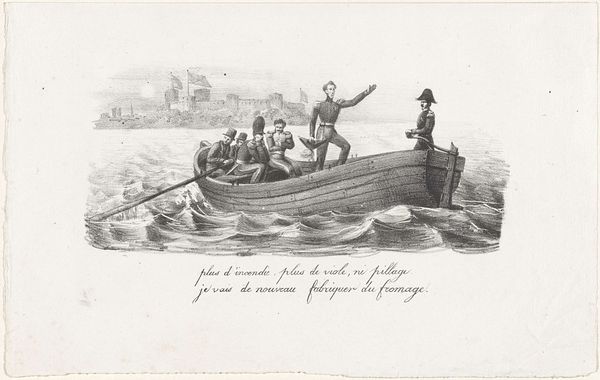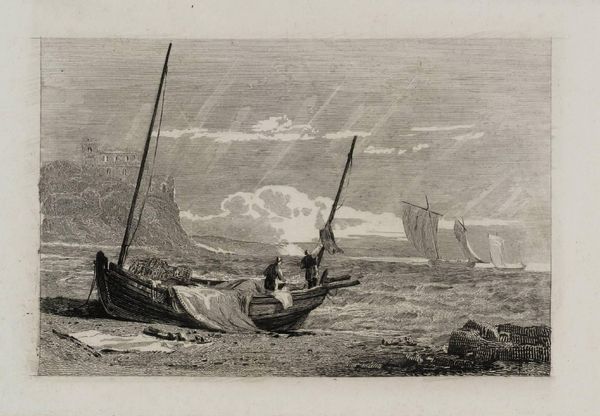
Jan Bart ontsnapt uit een Engelse gevangenis en steekt per roeiboot het Kanaal over, 1689 1806
0:00
0:00
Dimensions: height 180 mm, width 220 mm
Copyright: Rijks Museum: Open Domain
Curator: This engraving, titled "Jan Bart escaping from an English prison and crossing the Channel by rowboat, 1689," was created by Yves Marie Le Gouaz in 1806. The scene depicts a dramatic escape by sea. Editor: Immediately striking is the starkness, that monochromatic palette. It feels raw and precarious; the small boat practically swallowed by the choppy sea. The use of line to create texture, particularly in the water, is quite compelling. Curator: It's a fine example of narrative art, and the print medium here underscores its role in disseminating stories of national heroes, particularly at the beginning of the 19th century. Consider the socio-political landscape – France still reeling from revolution, and the importance of constructing national identity. Editor: True, but let's not ignore the formal devices. The artist uses the curving lines of the waves to draw your eye towards the boat, effectively staging the human drama against this formidable backdrop of nature. I wonder how that baroque aesthetic affected this print. The strong diagonals and dynamic composition certainly add to the drama. Curator: We can look at the material production – engraving being a relatively accessible medium meant these heroic narratives could reach a wider audience. Prints like these fed a demand, they served a function in bolstering patriotic sentiment. What labor was involved, what paper was used, and how the print circulated are vital considerations. Editor: Perhaps, but doesn't focusing solely on production and reception detract from the visual experience itself? Notice how the engraver renders the figures, each face etched with determination – a subtle play of light and shadow creating a sense of depth despite the linear quality of the engraving. That's visual rhetoric, right there! Curator: Agreed; but who was this Bart, anyway? To understand the emotional resonance of this image, it's essential to unpack who he represents in the French imagination and how that was strategically shaped and communicated at the time by this piece. Editor: Point taken. So, we have the formal arrangement conveying danger and resolution, a moment framed through careful arrangement of line and form, against the broader context of nation-building through accessible artworks. Curator: Precisely. It’s more than just the strokes of the tool; it’s the swell of a nation's collective ambitions reproduced on paper for mass consumption. Editor: And a compelling little drama told efficiently and powerfully, no less.
Comments
No comments
Be the first to comment and join the conversation on the ultimate creative platform.
